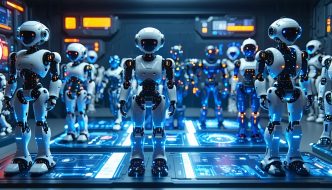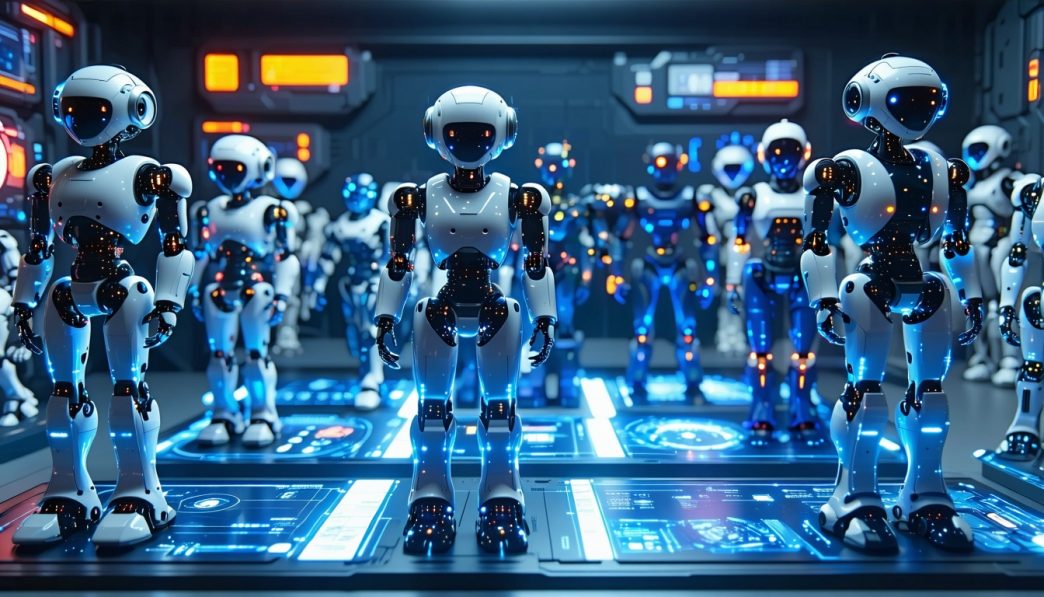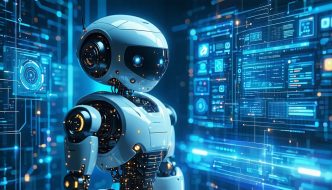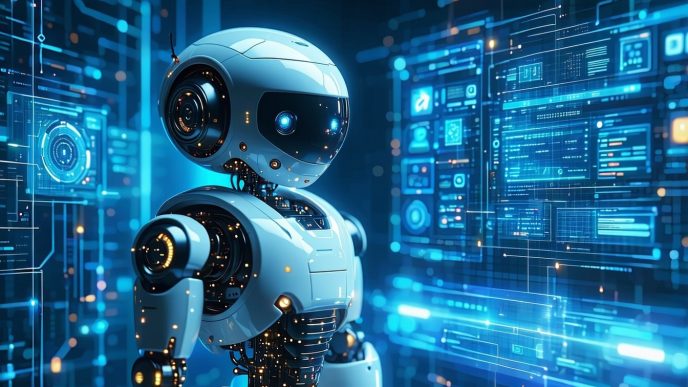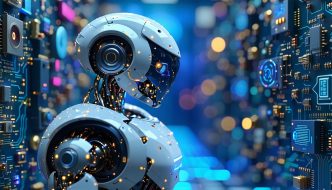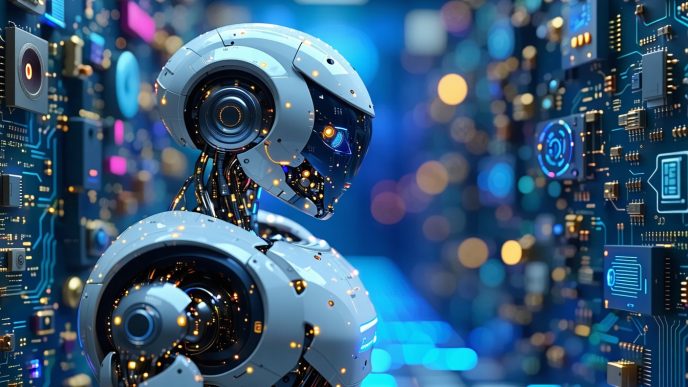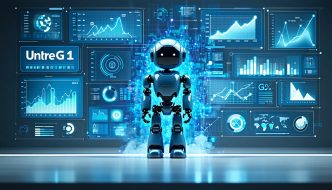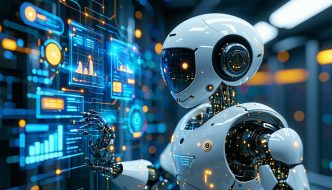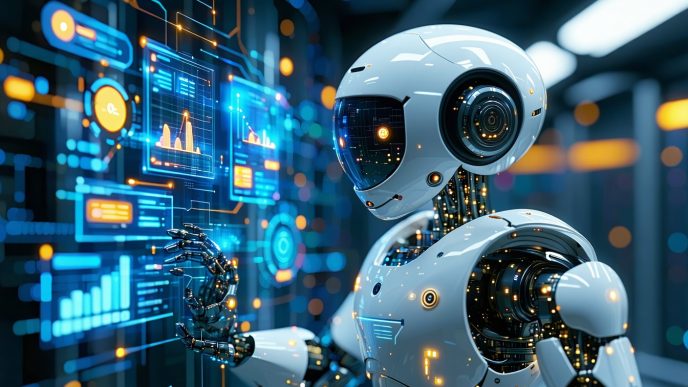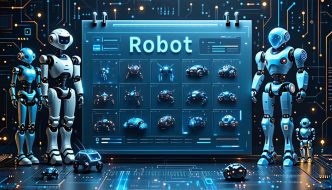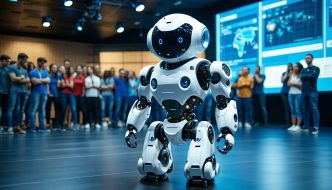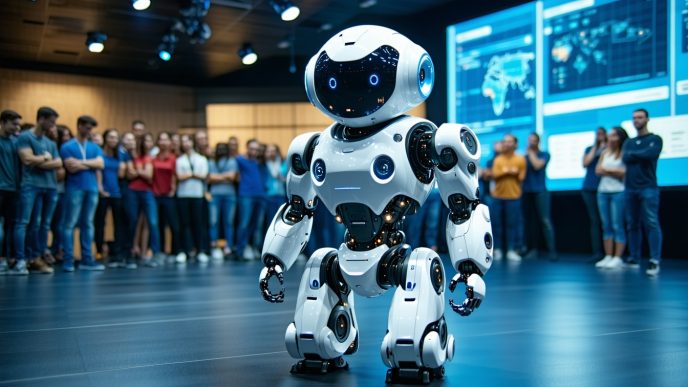Introduction to New Humanoid Robots
The Fascination with Humanoid Robots
Humanoid robots have captivated the imagination of both tech enthusiasts and the general public alike. These advanced machines, designed to resemble and mimic human behavior, showcase incredible feats of engineering and artificial intelligence. The appeal lies not only in their lifelike appearances but also in their potential to transform industries ranging from healthcare to entertainment. As developers push the boundaries of robotics, the curiosity surrounding what new humanoid robots can achieve continues to grow.
The fascination extends beyond aesthetics. Many individuals are eager to understand how these innovations work and what functionalities they offer. Each new model often comes equipped with cutting-edge technology, such as enhanced AI capabilities and improved mobility, making them worthy of attention. For avid followers of advancements in technology, staying informed about the latest releases is essential to appreciate the evolving landscape of humanoid robotics.
Importance of Staying Updated on Latest Releases
Keeping track of new humanoid robots is vital for a variety of reasons. For tech-savvy consumers and robotics enthusiasts, being informed allows them to compare models and evaluate features. This knowledge is particularly beneficial when assessing how these robots can fit into their lives or enhance specific tasks. Understanding the latest offerings also provides insights into manufacturer intentions and technological direction.
Additionally, as features and functionalities of humanoid robots evolve, so do the ethical considerations surrounding their use. Engaging with the latest information helps individuals navigate these conversations, particularly as robots become more integrated into everyday life. Staying updated on robot new releases can also provide a glimpse into future applications of robotic technology.
| Recent Releases | Key Features | Expected Impact |
|---|---|---|
| Tesla Optimus | Advanced AI, Human-like Movement | Transforming labor-intensive industries |
| Xiaomi Cyberdog 2 | Agility, Autonomous Navigation | Innovations in pet-like robots |
| Unitree G1 | Fast Mobility, Stable Balance | Enhancements in quadrupedal robotics |
| Apptronik Apollo | Versatility, Collaborative Features | Future integration in workplaces |
This growing interest in humanoid robots reflects a broader trend of embracing technology as it advances. By monitoring these developments, individuals can not only stay informed but also engage critically with the innovations that will shape future interactions with technology. Discovering the nuances of recent models allows for deeper appreciation and understanding, making it essential for anyone interested in the robotics field to follow the latest news and updates.
Robot 1: [Name of Robot]
Overview and Features
[Name of Robot] has been making waves in the world of humanoid robotics. This new creation features advanced AI capabilities, enhanced mobility, and a user-friendly interface, making it an exciting addition to the field. The specifications showcase its potential:
| Feature | Specification |
|---|---|
| Height | 5’ 5” |
| Weight | 110 lbs |
| Battery Life | 12 hours |
| Max Speed | 3 mph |
| Sensor Technology | Lidar, Cameras, and Proximity Sensors |
Equipped with cutting-edge technology, the robot can interact with humans in a natural way. It has the ability to recognize and respond to voice commands, navigate complex environments, and even learn and adapt over time via robot software updates.
Impact on Robotics Industry
The introduction of [Name of Robot] marks a significant milestone in the robotics industry. Its innovative features have set a new standard for humanoid robots, pushing the boundaries of what is possible in this field. As a result, it has sparked interest among tech-savvy consumers and enthusiasts who are always on the lookout for the latest designs.
Industry experts predict that the capabilities demonstrated by [Name of Robot] could inspire future releases from various companies. This trend places a spotlight on the importance of advancements in artificial intelligence, which is crucial for developing more sophisticated humanoid robots. Ultimately, [Name of Robot] serves as a critical reference point for the ongoing evolution of robots, paving the way for next-generation models to emerge, including anticipated updates like the Tesla Optimus release update and upcoming prototypes like the Xiaomi Cyberdog 2 release.
Robot 2: [Name of Robot]
Overview and Features
[Name of Robot] is one of the latest entries in the realm of humanoid robotics, capturing the attention of tech enthusiasts and innovators alike. This robot boasts an impressive array of features designed to enhance its functionality and user interaction.
Key specifications include:
| Feature | Description |
|---|---|
| Height | 5.5 feet |
| Weight | 150 lbs |
| Mobility | Bipedal walking with agility |
| AI Capabilities | Advanced machine learning |
| Voice Recognition | Natural language processing |
The combination of advanced mobility and AI capabilities allows [Name of Robot] to navigate complex environments, engage in conversations, and perform tasks typically reserved for humans.
Significance in Humanoid Robotics
The introduction of [Name of Robot] marks a significant milestone in the field of humanoid robotics. Its design and features reflect the latest trends in technology, particularly in artificial intelligence and robotic dexterity.
This robot’s ability to mimic human-like movements and interactions positions it as a frontrunner among new humanoid robots to watch. The advancements seen in [Name of Robot] contribute to the ongoing evolution of robotics, pushing boundaries and setting new standards for future releases.
The impact of this robot extends to various sectors, including healthcare, where it can assist patients, and in education, where it can serve as an interactive learning tool. The potential applications of [Name of Robot] are vast, making it a noteworthy addition to the ever-expanding landscape of humanoid robotics.
For more insights into the latest robot new releases, users can follow upcoming innovations and important updates, including Tesla Optimus release updates and other model announcements.
Robot 3: [Name of Robot]
Overview and Features
This month’s highlight is a groundbreaking humanoid robot that has captured the attention of tech enthusiasts and consumers alike. The new humanoid robot features advanced mobility, facial recognition technology, and a multi-functional interface designed to interact seamlessly with users.
| Feature | Description |
|---|---|
| Height | 5.5 feet |
| Weight | 110 pounds |
| Mobility | 12 jointed limbs with 360° movement |
| Interaction | Voice and touch-responsive interface |
| Battery Life | Up to 12 hours |
| Connectivity | Wi-Fi, Bluetooth, and app integration |
This impressive set of features allows it to perform numerous tasks, including assisting with household chores, providing companionship, and even offering educational support.
Contributions to Robotics Advancements
The introduction of this humanoid robot marks a significant advancement in the robotics industry. It showcases the potential for integrated AI systems that enhance emotional intelligence and social interaction, catering to the needs of consumers seeking more responsive and realistic robotic companions.
Key contributions from this robot include:
- Enhanced AI Algorithms: Utilizing machine learning, the robot can adapt to user preferences and improve its interactions over time.
- Collaborative Capabilities: Designed to work alongside humans, it can support tasks ranging from home maintenance to educational projects.
- Accessibility Features: Inclusive design allows individuals with disabilities to interact and control the robot, broadening its usability.
As developers continue to refine and innovate these technologies, it’s essential for enthusiasts to stay informed on the latest trends. For an ongoing look at what’s new in the world of robotics, readers can check our robot release calendar for updates on upcoming models and features.
This new humanoid robot is indeed one of the most exciting new humanoid robots to watch this month, pushing the boundaries of what robotic companions can achieve while integrating seamlessly into daily life.
Robot 4: [Name of Robot]
Overview and Features
This month, a new humanoid robot captured the attention of the robotics community with its advanced features and capabilities. Designed for versatility, it combines cutting-edge technology with a range of applications in different fields such as healthcare, education, and customer service.
Key features of this robot include:
- Facial Recognition: Capable of recognizing and responding to human emotions.
- Natural Language Processing: Allows for efficient and intuitive interactions.
- Mobile Navigation System: Equipped with sensors that enable smooth movement in various environments.
- Multi-tasking Abilities: Can perform several tasks simultaneously, making it highly efficient in dynamic situations.
Below is a summary of the robot’s specifications:
| Feature | Specification |
|---|---|
| Height | 5.5 feet (approximately 167 cm) |
| Weight | 120 lbs (approximately 54 kg) |
| Battery Life | Up to 12 hours |
| Charging Time | 2 hours |
| Connectivity | Wi-Fi, Bluetooth, and LAN |
Innovations in Humanoid Robot Technology
The introduction of this new humanoid robot signifies a leap forward in robotics technology, particularly in enhancing human-robot interaction. Innovations include:
- Enhanced AI Algorithms: Leveraging machine learning to improve response accuracy and emotional intelligence.
- Advanced Mobility Systems: Featuring joints and actuators that mimic human movements, allowing for more fluid and realistic actions.
- Modular Design: Facilitating easy upgrades and customizations, ensuring longevity and adaptability in an ever-evolving tech landscape.
This robot aligns with key trends in the industry, showing a focus on integrating artificial intelligence and human-like capabilities. For insights into other upcoming models, consult our section on robot new releases.
As the robotics landscape continues to evolve, keeping abreast of innovations like this one will inform tech-savvy consumers and enthusiasts about the future of humanoid robots. Regular updates on enhancements and new functionalities can be found in our archive on robot software updates.
Robot 5: [Name of Robot]
Overview and Features
The latest addition to the list of exciting new humanoid robots is designed to enhance human-robot interaction capabilities. This robot boasts cutting-edge technology, including advanced sensors and artificial intelligence, allowing it to respond to human emotions and adapt its behavior accordingly.
| Feature | Description |
|---|---|
| Height | 5.5 feet |
| Weight | 150 pounds |
| Operating System | Custom AI-based OS |
| Battery Life | 12 hours |
| Mobility | Multidirectional movement |
This humanoid robot is equipped with natural language processing abilities, enabling it to engage in meaningful conversations while understanding context and tone. Its design incorporates human-like gestures and facial expressions to create a more relatable interaction experience for users. For further updates on robot innovations, refer to our resource on robot new releases.
Future Implications in Robotics Landscape
The introduction of this robot signifies a transformative step in the evolution of humanoid robotics. Its ability to learn from interactions with humans not only opens avenues for personalized services in various sectors, such as healthcare and customer support, but also sets the stage for exploring the role of robots in everyday life.
Developers believe that this model will influence future designs by emphasizing human-centered robotics. As robots become more adaptive and responsive, they could perform tasks that necessitate emotional intelligence, leading to expanded use cases in fields requiring empathy and understanding.
The implications of this technology extend to the implications for software development and updates. Continuous improvements, such as those seen with the latest AI robot firmware updates, will likely enhance functionality and user satisfaction.
As humanoid robots like this one pave the way for further advancements, staying informed about upcoming releases and developments becomes crucial for consumers and enthusiasts alike. For a complete list of what to expect, check out the robot release calendar to keep track of all new offerings in the market.
Key Trends in Humanoid Robotics
The field of humanoid robotics is rapidly evolving, showcasing significant advancements and trends that are shaping the future of these machines. Understanding these trends is essential for anyone interested in the latest innovations in robotics.
Advances in Artificial Intelligence
Artificial intelligence (AI) has greatly influenced the development of humanoid robots. The incorporation of sophisticated AI algorithms allows these robots to perform tasks that were once thought to be exclusive to humans. Advanced machine learning models enable robots to learn from interactions, improving their functionality and adaptability.
Key statistics related to AI advancements in humanoid robotics include:
| Feature | Improvement Rate (%) | Year |
|---|---|---|
| Natural Language Processing | 30 | 2023 |
| Visual Recognition Accuracy | 25 | 2023 |
| Decision-Making Speed | 40 | 2023 |
Technological breakthroughs in AI are setting the stage for more intuitive and responsive humanoid robots. For the latest on updates regarding AI in robotics, visit our robot software updates page.
Integration of Human-like Movements and Behaviors
The pursuit of making humanoid robots more human-like continues to advance. Engineers are focused on developing systems that allow for natural movements and behaviors, enabling robots to navigate environments and interact with humans more effectively. Innovations such as advanced joint mechanisms and flexible actuators lead to more lifelike motions.
Recent data reflecting progress in this area includes:
| Characteristic | Current Capability | Future Target |
|---|---|---|
| Joint Movement Range | 180 degrees | 360 degrees |
| Gestural Communication | Basic | Advanced |
| Balance and Coordination | Moderate | High |
This integration enhances user experience, making robots more relatable and useful in various settings. For specific examples of this trend, check updates on humanoid robot features like those found in the xiaomi cyberdog 2 release.
Ethical Considerations in Humanoid Robot Development
As humanoid robots become more integrated into society, ethical considerations arise regarding their use and impact. Issues such as privacy, consent, and potential job displacement are under scrutiny. Developers and researchers are actively debating how to establish ethical guidelines to ensure responsible deployment of these technologies.
For instance, surveys reveal varying public opinions on humanoid robots taking over specific roles in the workforce:
| Role | Support (%) | Opposition (%) |
|---|---|---|
| Healthcare Assistants | 55 | 45 |
| Customer Service Agents | 40 | 60 |
| Domestic Helpers | 50 | 50 |
Addressing these ethical dilemmas is critical to building trust between consumers and technology. Discussions surrounding this can also be found at our robot release calendar where upcoming events will touch on these important topics.
With dynamic advancements and ethical considerations, the landscape of humanoid robotics is constantly shifting. Keeping up with trends provides consumers and enthusiasts with valuable insights into what to expect from the new humanoid robots to watch in the coming months.
